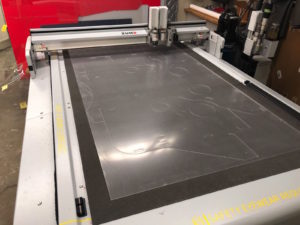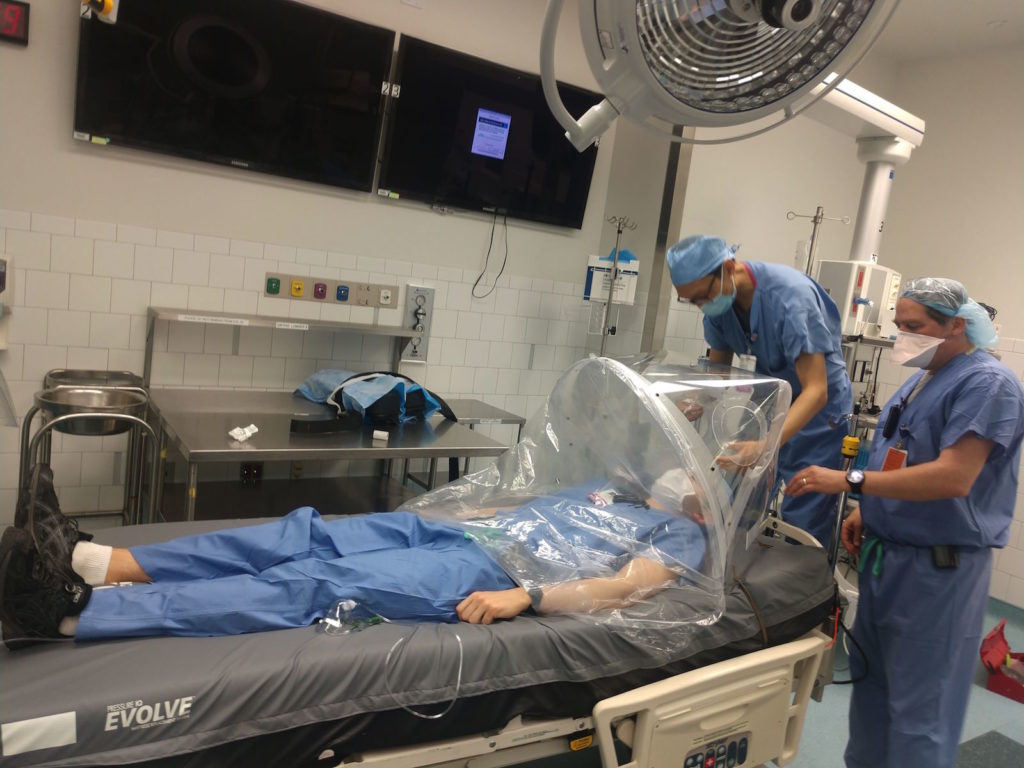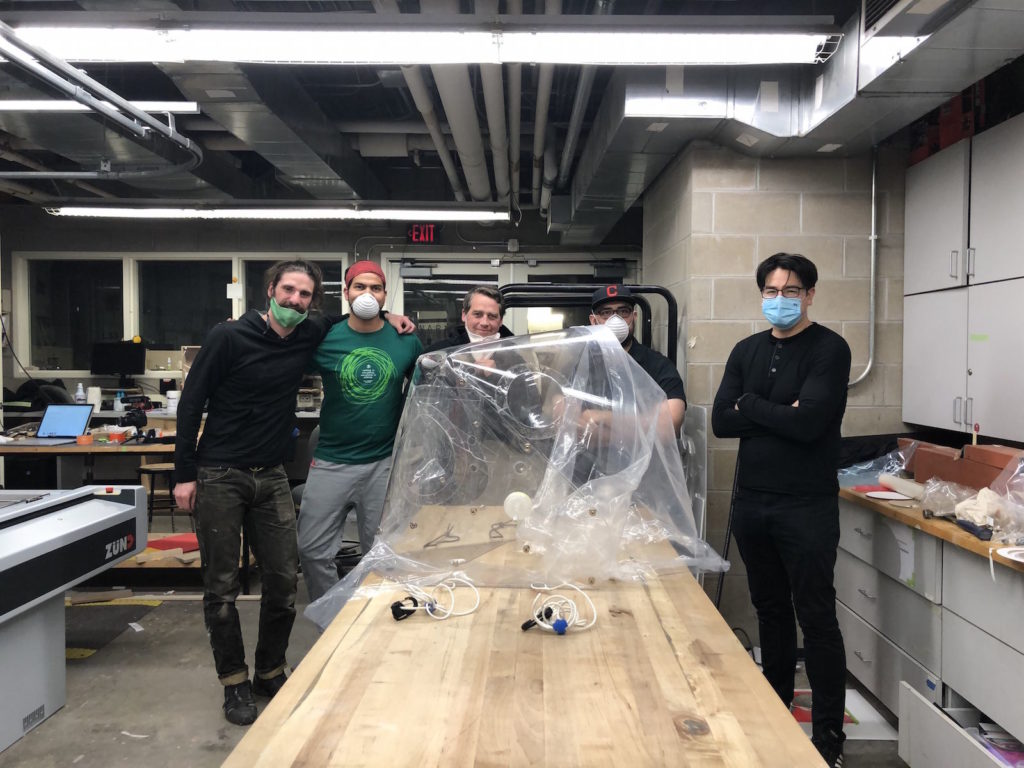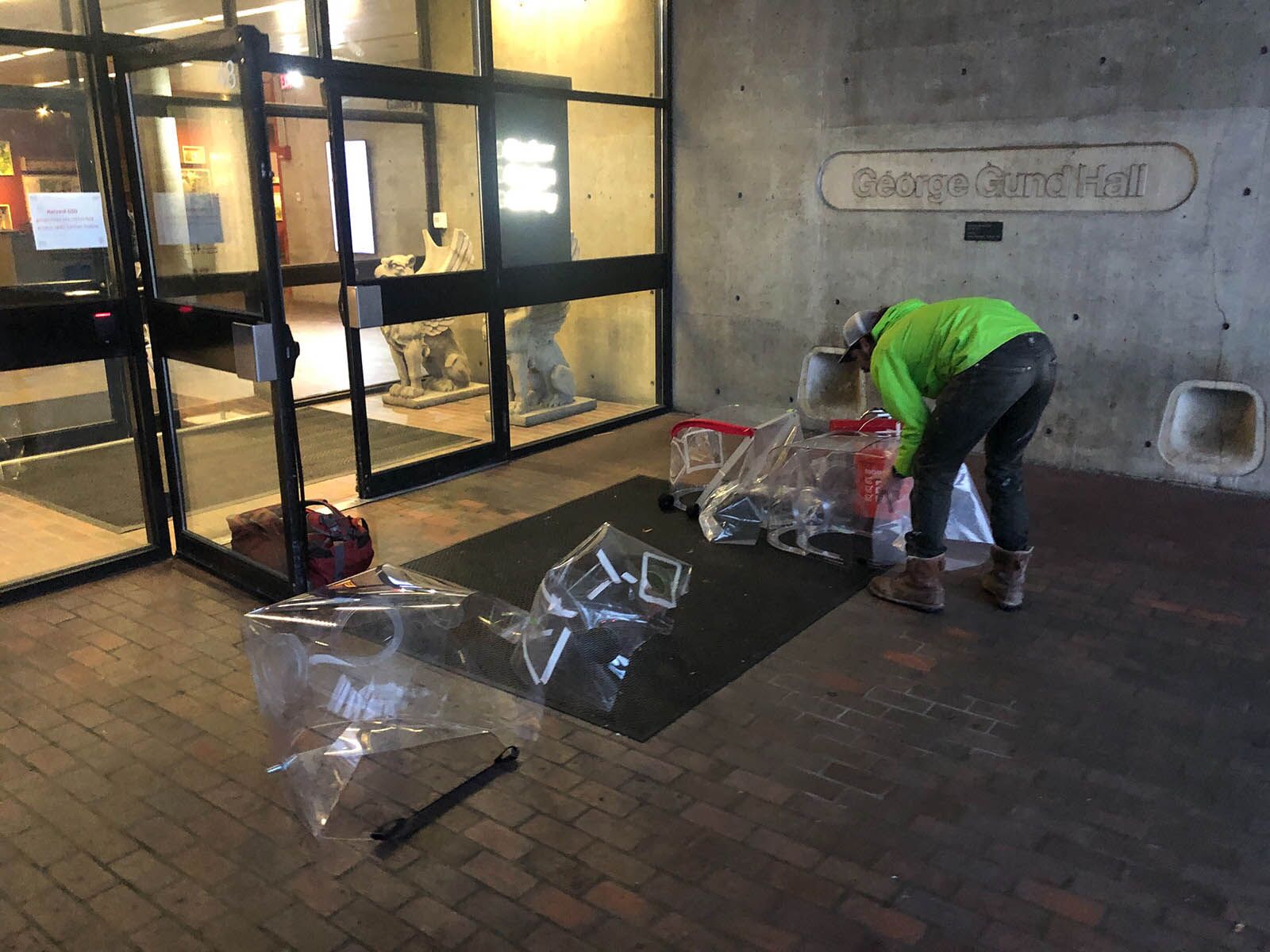Harvard University Graduate School of Design announces the rapid development of patient isolation hoods (PIH), in collaboration with clinicians at Mass General Brigham’s (MGB) Center for COVID Innovation and Boston Children’s Hospital (BCH). The GSD’s efforts have involved hundreds of designers, technical experts, and medical professionals from around the world in a community-led, open-source process, one that participants say could be a model for future modes of collaborative work and design.
Within two weeks, the design team was able to conceptualize and produce four flexible, lightweight PIH prototypes, delivering three to MGH on April 22 and one to BCH on April 24 for in-clinic evaluation. Patient isolation hoods act as a barrier between patients and healthcare providers to reduce providers’ risk of exposure to viruses and other contaminants during medical procedures.
Alongside the production of physical PIH, this collaborative process of design and evaluation has provoked reflections on the effort’s global, open-source, grassroots nature. Drawn from around the world and from various fields of study and expertise, more than 200 participants produced their designs and evaluations almost entirely via digital platforms, enabling the effort to be global in scope, rapid in pace, and uniquely collaborative.
“These patient isolation hoods are intended to be used in an environment that has extremely high and rigorous standards, and a normal structure and process of design and prototyping would take months or years to accomplish,” says Chris Hansen, digital fabrication specialist at the GSD’s Fabrication Laboratory. “Here, a design has been prototyped and put into a clinical environment in under a month. That was possible only by taking a new, non-hierarchical approach to design development, in which everyone is donating time and energy, and all stakeholders are empowered to make decisions independently.”

The GSD’s Fabrication Lab served as a production site throughout these PIH design efforts; equipped with CNC routers, laser cutters, Zund cutter, 3-D scanners, and other state-of-the-art technology, the Fabrication Lab ordinarily produces physical models for the GSD’s architecture, landscape architecture, urban planning, and urban design students and faculty.
These cross-institutional PIH efforts arose amid previously established, ongoing GSD work with the MGB Center for COVID Innovation, whose mission includes protecting front-line clinical staff and facilitating innovations that reduce the risk of COVID-19 transmission. Throughout March and April, the GSD—most specifically, its Fabrication Lab staff—produced thousands of 3-D-printed face shields and other personal protective equipment, or PPE, for MGB. By May 7, the GSD had fabricated close to 3,200 face shields and 2,200 face visors.
At the close of March, an ongoing Slack-based conversation among designers, doctors, and other contributors dedicated to PPE design had added PIH design to its focus. In consultation with participating doctors and clinicians, the collective team identified 25 critical design requirements for such hoods, including easy access for doctors’ arms and medical tools, rapid retractability in case of emergency, and negative air pressure, or suction, to move contaminants and air particles away from the attending doctor. Several days of meetings, design iterations, and test fabrication followed.
By April 10, after reviewing a series of PIH models, the team had developed consensus on one optimal design, dubbed “Apollo.” An “Apollo” prototype was delivered to Massachusetts General Hospital (MGH) on April 12 for clinical tests, after which it was approved for clinical use. Additional full-scale, fully operational “Apollo” prototypes were then fabricated at the GSD, three of them delivered to MGH on April 22 and one delivered to BCH on April 24. See an open-source compilation of “Apollo” design files via GitHub.

The design team’s various PIH prototypes are designed to function across hospital settings, whether emergency room, intensive care unit, or otherwise, and to allow ease of assembly, use, and disposal; they are composed of flat sheets of PETG plastic, with minimal need for joinery or panel construction. As an open-source design, the hoods can be fabricated anywhere in the world.
The PIH design and production process has inspired new perspectives on how design and medicine may join forces, throughout and beyond the ongoing COVID-19 crisis.
“The design process was unprecedented, partially because of the speed at which it was conducted, but also because of its ground-up, open-source, and collaborative design process,” observes Dr. Samuel Smith, MD, an anesthesiologist at MGH and instructor at Harvard Medical School (HMS) who participated in clinical review of these prototypes.
“Doctors and medicine need designers and design; good design leads to better, more effective equipment and resources, and eases physicians’ cognitive burden and fatigue. Despite the circumstances of this pandemic, the sight of so many doctors, designers, and others from around the world pooling expertise for the sake of a single effort has been empowering, giving us hope on many levels.”

